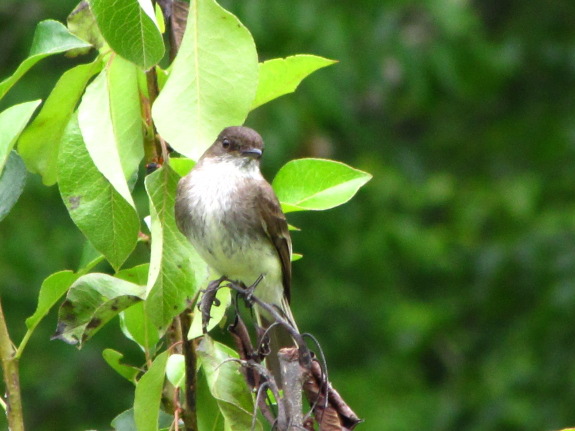
Fireblight and topworking

My topworked
pear trees were a
spectacular failure. The trees came down with fireblight, and I
stuck my head in the sand so long they managed to pass the bacteria on
to the apple trees.
I started out blaming
the scionwood source since we'd never had fireblight on our farm
previously. However, some research made me rethink that and start
pointing the finger back at myself. It turns out that extremely
heavy pruning makes it far more likely you'll get fireblight in your
trees, and my topworking involved some very heavy pruning. (I'm
surprised the information I read on topworking pears didn't include
that warning, but I guess the websites were geared at commercial
orchards who spray antibiotics.)
 Meanwhile, something about
the spring weather also seems to have promoted fireblight. My
sister called me to say that her pear trees 90 miles away are so badly
fireblighted, she might have to cut them down. Like me, she'd
never seen fireblight on her farm before, and she didn't do any crazy
topworking. So it's possible that the disease would have struck
whether I pruned heavily or not.
Meanwhile, something about
the spring weather also seems to have promoted fireblight. My
sister called me to say that her pear trees 90 miles away are so badly
fireblighted, she might have to cut them down. Like me, she'd
never seen fireblight on her farm before, and she didn't do any crazy
topworking. So it's possible that the disease would have struck
whether I pruned heavily or not.
Better late than never,
I pruned out all of the damaged branches. But I still might have
to cut my pear trees down too since the trunks have lesions all the way
to the ground. I'd just assumed one of our cats was using the
trunk as a scratching post, but closer examination suggests the wounds
are more likely to be another symptom of fireblight.
The good news is that
the phoebe pictured at the beginning of this post seems to be taking a
major dent out of our Japanese
beetle population
this year. A pair of the insect-eating birds is nesting in the
barn, right next door to our grapes (also known as "Japanese beetle
mecca"). In previous years, I've picked huge numbers of beetles
off the row of grapes, but this year there only seem to be a few
beetles...and lots of bird droppings. If only the phoebes would
head over to the raspberries and continue their good work!
Want more in-depth information? Browse through our books.
Or explore more posts by date or by subject.
About us: Anna Hess and Mark Hamilton spent over a decade living self-sufficiently in the mountains of Virginia before moving north to start over from scratch in the foothills of Ohio. They've experimented with permaculture, no-till gardening, trailersteading, home-based microbusinesses and much more, writing about their adventures in both blogs and books.
Want to be notified when new comments are posted on this page? Click on the RSS button after you add a comment to subscribe to the comment feed, or simply check the box beside "email replies to me" while writing your comment.

Mitsy --- With fireblight, an ounce of prevention is worth a pound of cure. Picking resistant varieties (which we did) is a good start, then making sure the tree doesn't have too much excess energy going into new shoots. The pruning cuts aren't what makes the tree susceptible to fireblight, but the excess energy stored in the roots if you take too much off the top. You get the same effect if you feed the tree too much.
There are some chemical treatments, but once the bacteria hits, I believe pruning is the only solution.